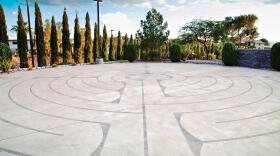Delicious by design
Eating out is always an adventure, and not just for our mouths. We often forget the role design plays in the dining experience. The next time you’re out for a bite on the Strip, look beyond the plate, particularly if you’re at a David Rockwell-designed eatery. Indeed, Rockwell has crafted some of Southern Nevada’s most striking dining experiences — or, as Vanity Fair architecture critic Paul Goldberger called his work, “sophisticated versions of fantasy environments.” His artfully conceived, immersive spaces keep Rockwell crisscrossing the globe for commissions in Madrid and Dubai, London and Hong Kong — oh, and let’s not forget Las Vegas.
“Eating out is a social act that comes with expectations about a shared experience,” says Rockwell, who’s received the Smithsonian’s National Design Award. “Restaurants have the potential to create powerful and lasting memories, similar to the experience of live theater. I think you need to tell a complete story in the design of a restaurant, one that embraces the identity of the chef, the nature of the cuisine, and also the context of the restaurant itself.” In a recent interview, Rockwell discussed his design vibe behind some of the Strip’s most acclaimed restaurants.
The playpen: Jaleo. Chef José Andrés’ restaurant at The Cosmopolitan incorporates Spanish-inspired design elements throughout the interior, including calligraphy, surrealism and traditional mantillas, or lace shawls. A native of Spain’s north coast, Andrés wanted touches that reflected the heritage of his home country, including a wood-burning paella kitchen and hand-carved Iberico ham station.
“The design evokes the playfulness of Las Vegas,” Rockwell says. “For example, one table incorporates foosball for a fun and creative dining area that celebrates Spanish cuisine and craft. We wanted to fully immerse guests into the playful act of enjoying food.”
The backyard: BLT Burger. BLT isn’t a typical burger joint. Rockwell’s approach focuses on the burger-eating experience by making the grill, milkshakes and beer brewing the central focus. The entrance of this Mirage eatery is a textured wood box made from a butcher’s block, while a glazed red brick wall, golden upholstery and textural materials accent the central grill. It treats diners as though they’re at a backyard barbecue.
“As with many of our designs, the mood can transform,” Rockwell says. “The entry is backlit with lighting that changes color and intensity to correspond with the time of day, while the grill hood is surrounded by mesh metal that lets a skylight’s light glimmer and play between the two materials.”
The club: Strip House. Rockwell designed the original Strip House, which opened in New York in 2000. Like the original, Planet Hollywood’s incarnation is sexy and evocative, complete with silhouettes of burlesque dancers inside storefront exhibits. Bathed in rich reds, Strip House evokes the warmth and decadence of 1930s and ’40s speakeasies, with tufted leather booths, velvet mahogany and antique mirrors. The main dining room’s black and white photographs of celebrities reference Asti’s — a legendary Greenwich Village haunt that has since closed, says Rockwell, but that lives on in this small homage in his multilayered work.








